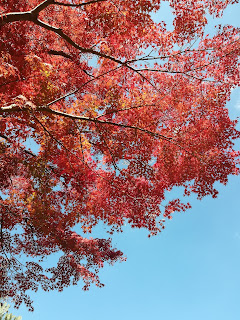Learning How to Read in Japanese
 At my second school (that is, not my base school), I sit next to the geography teacher in the teachers' room. He is a very kindly older man in his sixties, probably bound for retirement soon. He has always been very nice to me, and talks to me at lunch about various things, including the geography and history of Japan.
At my second school (that is, not my base school), I sit next to the geography teacher in the teachers' room. He is a very kindly older man in his sixties, probably bound for retirement soon. He has always been very nice to me, and talks to me at lunch about various things, including the geography and history of Japan.Since the new school year started in April, this geography teacher, O sensei (a shortening of his name, not his real last name!) has taken to giving me personalized lessons during third period on Wednesdays, when we are both free. At first, when he suggested geography and history lessons, I low-key tried to get out of it, saying I was bad at those subjects. But he, in his kindly way, insisted that I learn about these things.
So far, he has taught me a little about the various train lines running through Japan, the structure of the neighborhoods in Nakatsu, the history of China's cultural exports to Japan, a little kanji history, and more. Today, we went to the school library to have our lesson, and O sensei asked the librarian for books with just hiragana (the main phonetic alphabet of Japanese that does not use kanji, which are the Chinese characters) and katakana (the second phonetic alphabet used mostly for foreign words). The librarian pulled out Japanese versions of the classic kids' books Frog and Toad. I smiled a little, embarrassed, and said I knew of those books.
It was a humbling experience to read aloud to this older teacher, admitting I didn't know some thirty words out of the fourteen short pages I read. My intonation and understanding of word segmentation was sometimes off. But O sensei helped me understand, and of course the pictures helped! I couldn't help thinking back to my work with middle schoolers in Oakland, many of whom were behind several grade levels in reading.
There was one particular middle school teacher at that Oakland school who insisted on finding high-interest books for her low-level readers, and she sometimes struggled in that task. A seventh grader reading picture books is an unusual sight most of the time, and sometimes students who were stuck reading such picture books - which were on their level - were embarrassed, as I was reading Frog and Toad. But it is only through building up our level with easier books, which sometimes have childish pictures, that we can graduate to harder texts that reflect our developmental intelligence.
And, as emerging readers, whether in our native or second language, we often need to rely on sympathetic teachers who know we are smarter than Frog and Toad, even though our reading level shows a gap in linguistic ability or ability to comprehend. It's quite a moving experience to not be able to read well in Japanese, and to learn under the tutelage of O sensei. I am learning how to read again, and someday I will emerge as a literary butterfly, tossing kanji readings back and forth like it's nothing!


Comments
Post a Comment